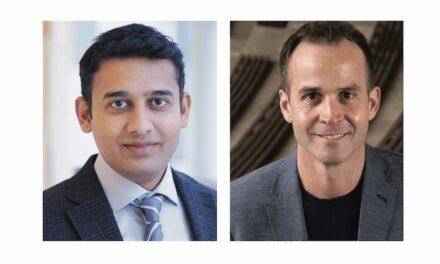April 2014 | Hearing Review

This edition of HR contains the first full-fledged dispenser survey this magazine has conducted since 2006, and I feel a little bad because a lot of the information that it contains is not particularly positive or uplifting. For example, it suggests:
- There are legitimate concerns about the number of dispensing professionals entering hearing care versus the number leaving it;
- We are dispensing, on average, lower volumes per practice than we did 10 and 20 years ago; and
- True are the statements of industry executives and market analysts who say average sales prices (ASPs) are flat (and probably decreasing when you take into account the entire hearing care market).
When looking at this data in its entirety, three conclusions come to mind:
#1) Dispensing professionals of the future will need to use their talents more efficiently. The successful practice of the future—and indeed, the top practices of today—are using more technicians and support personnel to increase efficiency and fully capitalize on the skills unique to experienced dispensing professionals. I think the future will bring greater numbers of patients, less minutes of direct face-time contact, but more high-quality contact. Think GPs using physician assistants or dentists using oral hygienists to maximize the effectiveness of their face-time with patients. And speaking of face-time, this trend will also gradually bring teleaudiology, patient self-programming, and remote programming into play as our consumer population becomes dominated by Baby Boomers who are comfortable with and demand these technologies. This is one more reason why scale in a practice matters. The dispenser survey provides good evidence that multi-office practices are outperforming smaller ones in terms of business success.
#2) There is a panicky notion that we’re all just going to wake up one day and there won’t be a need for dispensing professionals. I think this is a vague paranoia brought on by increasingly efficient first-fit algorithms, the lessened need for custom impressions in BTE/RIC fittings, and better low-end, low-priced hearing aids. I think we do have legitimate concerns, but the only valid concerns are related to evolving technology and computer automation, in general—factors facing everyone in all professions. Ultimately, if you’re doing anything that a machine can do, you should be nervous, and you need to start looking at what else your skills and training bring to the table. And dispensing professionals have these in abundance.
#3) In order not to be commoditized, we need to concentrate on our value proposition to the patient. The term “patient-driven” does not apply only to the medical industry; the patient will be increasingly in charge of hearing healthcare decisions, and dispensing professionals need to position themselves accordingly. Like it or not, there are new products emerging both from inside our industry and from consumer electronics that are, to some extent, effective and will necessitate dispensing professionals to increase the value of their offerings. In the end, best practices will rule the day because we’ve proven that best practices add value and increase customer satisfaction—beyond what over-the-counter devices can offer.
Change is coming, but it will be positive change. And much of it has to do with redefining not what you do, but how you accomplish what you do. “Dispensing audiology” or “hearing aid dispensing” will eventually need to move to “better hearing and better communication”—or what Douglas Beck and Curtis Alcock refer to in this edition of Hearing Review (p 16) as “maximal hearing and listening.” Don’t get me wrong: you’ll still continue to get the bulk of your revenues from hearing aids. But the overall goal will be individualization, getting the most out of the patient’s residual hearing, and allowing people to live independent, vibrant lives.
In order for people to maintain independent lifestyles, they have to communicate effectively in a variety of ways, to a variety of people, in a variety of settings. That’s where you come in. And your services will also be needed by people with normal hearing, and people who are simply looking for highly customized solutions that involve new apps, ALDs, alerting devices, text telephones, aural rehab services, auditory retraining, hearing conservation, tinnitus, or taking advantage of the myriad evolving telecommunications.
All of these could be thought of as technologies that assist people in living in place, healthy aging, and maintaining independent lifestyles. These will be the buzzwords for the next 10 to 30 years.
So, with the aging population, I think there will be an increasing need for dispensing professionals who provide individualized hearing care. The future is bright, but it does encompass change. And our industry and professionals need to change with it.
Original citation for this article: Strom, K. Survey says… Hearing Review. 2014;21(4): 6.





